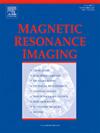DCE-MRI based deep learning analysis of intratumoral subregion for predicting Ki-67 expression level in breast cancer
IF 2
4区 医学
Q2 RADIOLOGY, NUCLEAR MEDICINE & MEDICAL IMAGING
引用次数: 0
Abstract
Objective
To evaluate whether deep learning (DL) analysis of intratumor subregion based on dynamic contrast-enhanced MRI (DCE-MRI) can help predict Ki-67 expression level in breast cancer.
Materials and methods
A total of 290 breast cancer patients from two hospitals were retrospectively collected. A k-means clustering algorithm confirmed subregions of tumor. DL features of whole tumor and subregions were extracted from DCE-MRI images based on 3D ResNet18 pre-trained model. The logistic regression model was constructed after dimension reduction. Model performance was assessed using the area under the curve (AUC), and clinical value was demonstrated through decision curve analysis (DCA).
Results
The k-means clustering method clustered the tumor into two subregions (habitat 1 and habitat 2) based on voxel values. Both the habitat 1 model (validation set: AUC = 0.771, 95 %CI: 0.642–0.900 and external test set: AUC = 0.794, 95 %CI: 0.696–0.891) and the habitat 2 model (AUC = 0.734, 95 %CI: 0.605–0.862 and AUC = 0.756, 95 %CI: 0.646–0.866) showed better predictive capabilities for Ki-67 expression level than the whole tumor model (AUC = 0.686, 95 %CI: 0.550–0.823 and AUC = 0.680, 95 %CI: 0.555–0.804). The combined model based on the two subregions further enhanced the predictive capability (AUC = 0.808, 95 %CI: 0.696–0.921 and AUC = 0.842, 95 %CI: 0.758–0.926), and it demonstrated higher clinical value than other models in DCA.
Conclusions
The deep learning model derived from subregion of tumor showed better performance for predicting Ki-67 expression level in breast cancer patients. Additionally, the model that integrated two subregions further enhanced the predictive performance.

基于DCE-MRI的肿瘤内亚区深度学习分析预测乳腺癌中Ki-67表达水平。
目的:探讨基于动态对比增强MRI (DCE-MRI)的肿瘤内亚区深度学习分析(DL)是否有助于预测乳腺癌中Ki-67的表达水平。材料与方法:回顾性收集两所医院290例乳腺癌患者。k-means聚类算法确定肿瘤的亚区。基于3D ResNet18预训练模型,从DCE-MRI图像中提取整个肿瘤和亚区域的DL特征。经降维后,建立logistic回归模型。采用曲线下面积(AUC)评估模型性能,并通过决策曲线分析(DCA)证明模型的临床价值。结果:k-means聚类方法基于体素值将肿瘤聚为两个亚区(栖息地1和栖息地2)。生境1模型(验证组:AUC = 0.771,95年 % CI: 0.642 - -0.900和外部测试集:AUC = 0.794,95 % CI: 0.696 - -0.891)和生境2模型(AUC = 0.734,95 % CI: 0.605 - -0.862和AUC = 0.756,95 % CI: 0.646 - -0.866)显示更好的预测能力ki - 67表达水平比整个肿瘤模型(AUC = 0.686,95 % CI: 0.550 - -0.823和AUC = 0.680,95 % CI: 0.555 - -0.804)。基于两个子区域的联合模型进一步增强了预测能力(AUC = 0.808,95 %CI: 0.696-0.921, AUC = 0.842,95 %CI: 0.758-0.926),在DCA中比其他模型具有更高的临床价值。结论:基于肿瘤亚区的深度学习模型预测乳腺癌患者Ki-67表达水平有较好的效果。此外,整合两个子区域的模型进一步提高了预测性能。
本文章由计算机程序翻译,如有差异,请以英文原文为准。
求助全文
约1分钟内获得全文
求助全文
来源期刊

Magnetic resonance imaging
医学-核医学
CiteScore
4.70
自引率
4.00%
发文量
194
审稿时长
83 days
期刊介绍:
Magnetic Resonance Imaging (MRI) is the first international multidisciplinary journal encompassing physical, life, and clinical science investigations as they relate to the development and use of magnetic resonance imaging. MRI is dedicated to both basic research, technological innovation and applications, providing a single forum for communication among radiologists, physicists, chemists, biochemists, biologists, engineers, internists, pathologists, physiologists, computer scientists, and mathematicians.
 求助内容:
求助内容: 应助结果提醒方式:
应助结果提醒方式:


